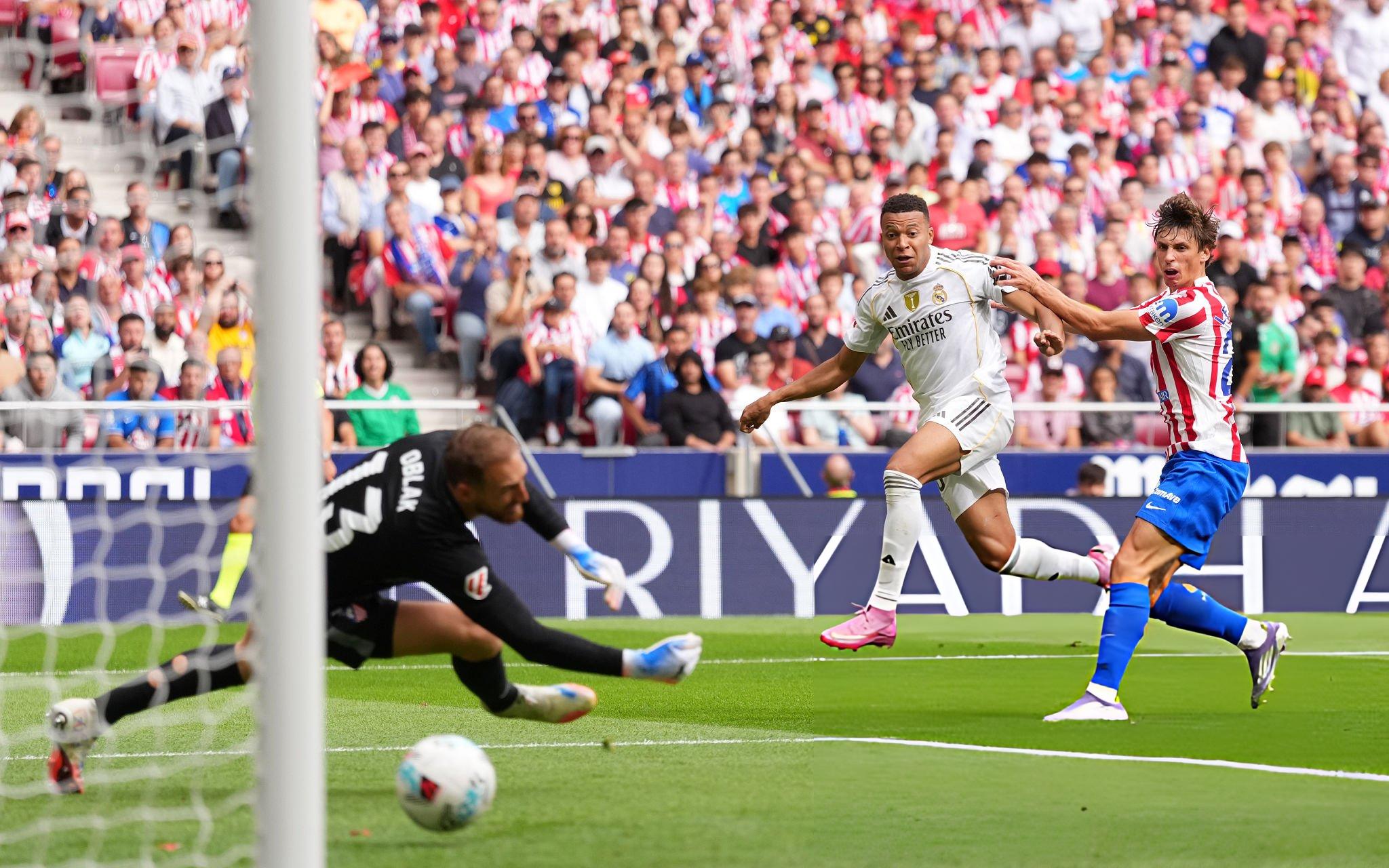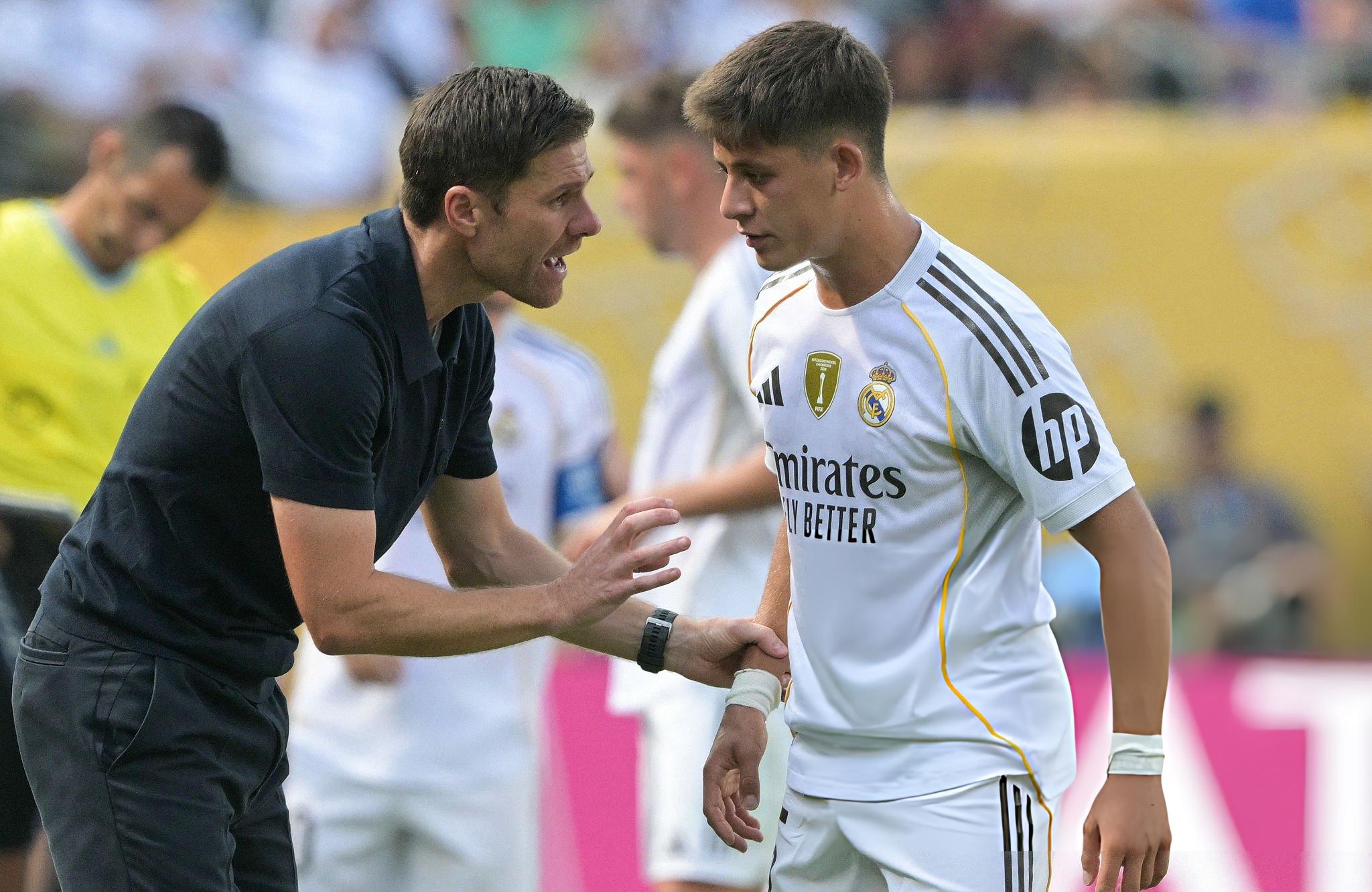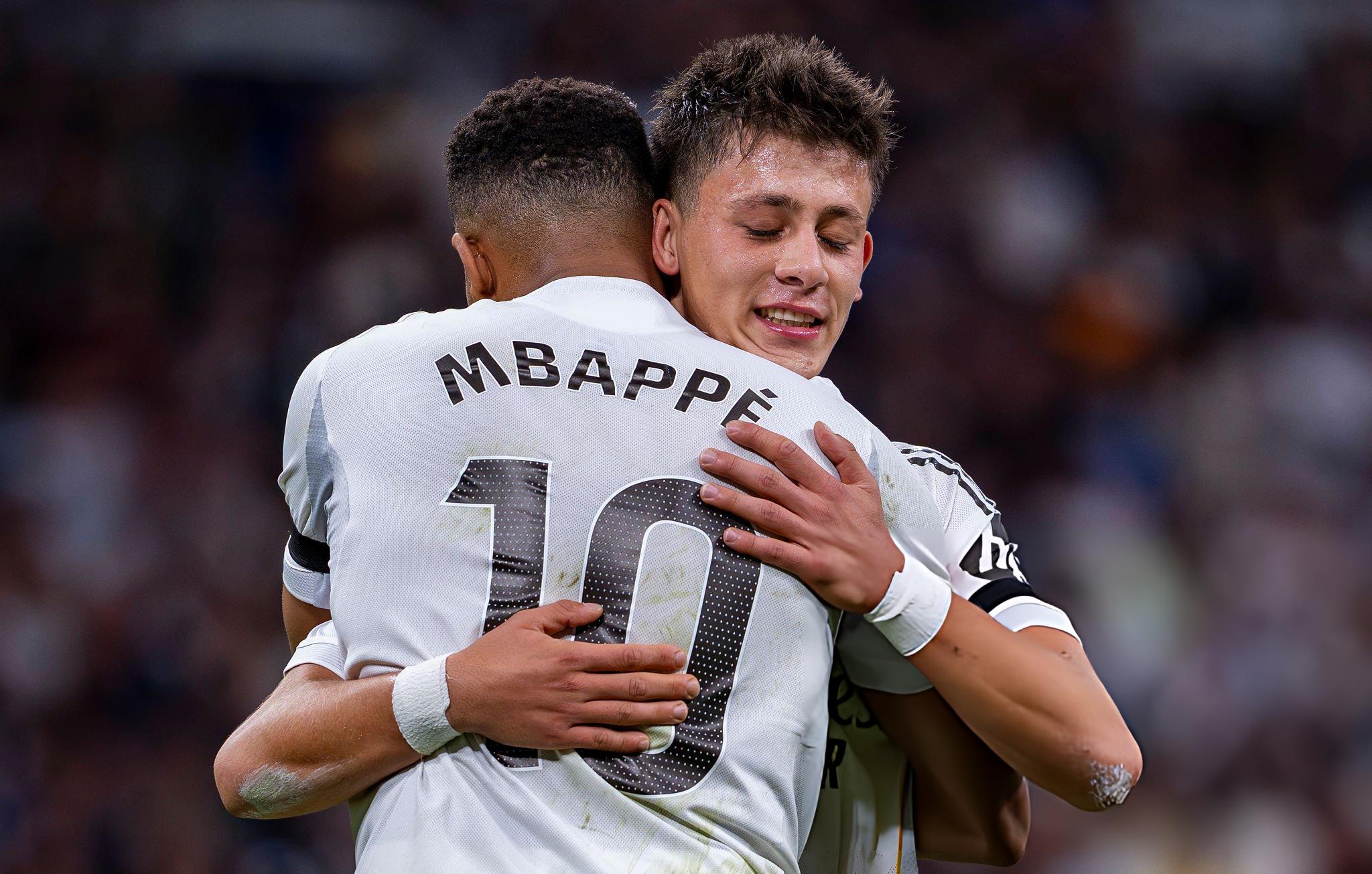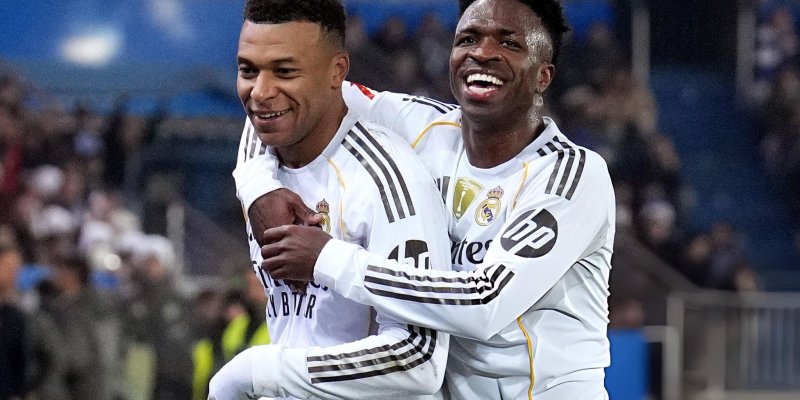
In the new season, Real has turned positional attacks into a series of well-rehearsed automatisms — and at the center of this structure stands a stable tandem: Kylian Mbappé and Arda Güler. More than half of Madrid’s goals come from them: of 34 goals in 14 official matches, 55.9% involved the French-Turkish axis (Kylian’s headline numbers are 18+2, Arda’s 3+6). But it’s not about raw stats: this partnership is strategy, not coincidence — its readability for teammates and unreadability for opponents makes Real frighteningly predictable… in the most unpleasant sense for their rivals.
From Bench to System: How the Duo Became the Foundation of the Attack

The first sparks of chemistry appeared last spring, when Güler was still a rotation player. Carlo Ancelotti carefully managed his minutes, stressing that for a young midfielder the rhythm of development mattered more than the noise around him. With Xabi Alonso’s arrival, everything clicked: Arda immediately entered the XI and took on the project’s primary playmaker role. The coaching idea is simple and clear — Güler occupies pockets between the lines, and Mbappé hunts the space behind the center-backs. The set route: “playmaker in the half-space → line-breaking pass → an elite finisher’s run.”
Even at the Club World Cup — where Mbappé missed part of the tournament due to health issues — the duo announced itself: Arda still found Kylian with an assist. From there the bond only grew stronger: since the season started Mbappé hasn’t left the XI, Güler has rested only sparingly, and their on-field understanding is read without words.
Press Start: The Mechanics of a Move in Three Touches
The logic of the link is extremely rational. Güler receives between the lines, attracting the holding midfielder and one center-back; Mbappé simultaneously launches a diagonal run into the defender’s blind side. Arda reads the trajectory, chooses the delivery (along the ground or over the top), and sets the tempo just right. Variety is the key to durability.
LaLiga examples make it obvious. Against Oviedo — the classic of the genre: reception between the lines → a slicing pass into the window between the center-backs → control → shot to the far corner. Versus Levante — a different angle: Arda hadn’t fully “locked” the ball yet but had already read Mbappé’s sprint; a ground pass risked interception, so he opted to clip it over the top. Mbappé’s speed neutralized contact with the defender: first to the ball, around the keeper, roll into an empty net.
Stress Test at the Summit: It Works in Big Games Too

Even the strongest opponents can’t erase the pattern’s effectiveness. In the Atlético derby, the Frenchman first drops into the middle third, opening the block with a pass to Arda out wide, then immediately accelerates into the “corridor” between center-back and full-back. Güler, barely raising his head, slides the ball into the zone where Mbappé’s advantage is measured not in meters but in time. Result — shot to the far corner and a goal. The essence here is timing: Arda and Kylian are like a pendulum that always meets at the right split-second.
The Duo's Digital Signature: Facts You Can't Escape
Set emotions aside and the raw data speaks louder. This season Mbappé and Güler have already assisted each other seven times: six of Arda’s passes found Kylian, once the Frenchman returned the favor. Güler has 39 key passes, 17 of them to Mbappé; on average, their goal connection yields one assist roughly every 150 minutes. Within the team’s passing network, “Arda → Kylian” is the main artery: 77 passes to the Frenchman (for scale: the next-most frequent recipients are full-back Álvaro Carreras with 63, Vinícius with 58, and Franco Mastantuono with 27). Mbappé has 18 goals for Real this season, 11 of them assisted; six by Güler himself. This is no longer a hot streak — it’s a stable pattern.
Alonso's Matrix: How the Coach Amplifies the Strong

Xabi Alonso doesn’t just recognize lucky chemistry — he designs an ecosystem around it. Real systematically frees pockets between the lines for Güler: the pivot maintains width, the full-backs provide timely height, and the center-backs circulate the ball until the first free central channel opens. Meanwhile, Mbappé enjoys freedom in his choice of lane — from an outside run in behind via the flank to a sharp cut along the central axis. Tellingly, even after Jude Bellingham returned, the architecture stayed intact: roles are distributed so the “first creative touch” is most often with Arda, while the “final touch” more often falls to Kylian.
Historical Echo: From Özil — Ronaldo to Today's Duo
The parallel many draw suggests itself. In the early 2010s, Mesut Özil — Cristiano Ronaldo set the benchmark for the “creator + finisher” formula. Over three seasons, excluding penalties, Ronaldo scored 138 goals for Real, and 27 of them (about 20%) were assisted by Özil. In the 2010/11 campaign, Mesut supplied 12 assists to Cristiano — a rare concentration of mutual efficiency. Today, Güler isn’t a copy of Özil; he’s closer to a hybrid: Özil-like episode reading and line-breaking “through” passes mixed with the vertical boldness from the Guti school. Mbappé is a new-type finisher, marrying the speed of an elite winger with a No. 9’s hunter’s instinct.
How to Cut Off the Oxygen to the Duo: The Opponent's View

The practical recipe is to disrupt timing. Teams that pre-emptively insure the half-spaces with a second holding midfielder and give the center-backs a “hand-off rule” (one steps out to the carrier, the other drops early to cover the run) have dulled this line’s edge. A narrow back line closes the windows for “through” balls, and aggressive counter-pressing on Arda’s first touch helps too — a millisecond’s delay turns a perfect pass into a merely good one, and a merely good one isn’t always converted by Mbappé if the keeper gains an extra beat to read it.
One Look — One Chance: The Psychological Effect of Synchronicity
Players often say a simple gesture or a moment of eye contact before the action is enough. Güler’s “magic” first touch accelerates the decision; Mbappé’s phenomenal first-step speed and sense for where the defender’s weak body angle lies complete the picture. Together, this builds trust: when the team knows the duo can generate a chance in almost any phase of possession, the passing lane seeks Arda between the lines more readily, and the flanks don’t mind ceding initiative to the center.
Domino Effect at the Bernabéu: What the Tandem Means for Real

The Mbappé — Güler partnership isn’t a one-off flash but a mechanism that stretches the opponent’s defense and saves the entire team’s resources. Madrid regularly finds a guaranteed source of ball progression and creates shots from “golden zones” — thanks to the combination of Arda’s game reading and Kylian’s killer timing. There’s also room to grow: the more Real diversifies the preparatory patterns (third-man runs, hidden switches, decoy full-back runs), the harder it will be for opponents to predict exactly where the window for the decisive pass will open.
Comparisons with Ronaldo and Özil are flattering, but in this new iteration of Madrid the formula has evolved. If the duo maintains its current intensity and health, it has every chance to rewrite the club’s benchmarks for an “assistant — goal-scorer” partnership. For now, Real enjoys a pivotal edge: when Mbappé and Güler are on the pitch together, the team almost automatically earns at least one one-on-one per match. In modern football, that’s a luxury that often equals three points.








